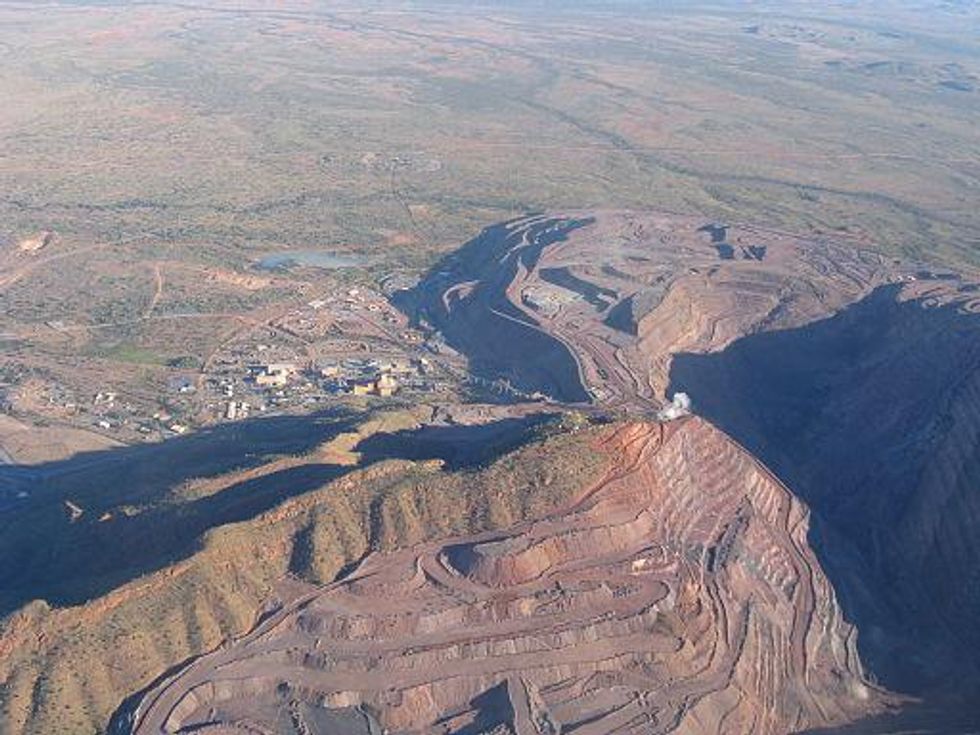Rio Tinto Takes Argyle Underground, Steps Up Efforts to Sell Mines
Rio Tinto is still looking to sell its diamond unit as Dominion Diamond and Anglo American seek to increase their exposure to the industry.
Diversified mining giant Rio Tinto (ASX:RIO,LSE:RIO,NYSE:RIO) has given its wholly owned Argyle diamond mine a new lease on life by transforming it from an open-pit mine into an underground block-caving operation.
The new mine, which is worth $2.2 billion, is located in the East Kimberley region of Western Australia and officially opened on April 30, according to a company press release. Rio has stated that going below the surface will allow Argyle, which it describes as an “iconic asset,” to continue operating until at least 2020, producing an estimated 20 million carats per year.
The plan to go underground has been in the works since at least 2004, when Rio began underground exploration at Argyle, PerthNow reported. That’s also when the resources available via the open-cut process started to decline.
Argyle’s managing director, Kim Truter, said at the mine opening that she hopes continued supply from Argyle “will help to feed the global deficit in diamonds” that is being driven by the fact that “[m]ost existing diamond mines around the world are getting older and there is a dearth of new mine discoveries.”
Since its 1983 opening, the Argyle mine has produced 800 million carats of diamonds, PerthNow notes. Perhaps more significantly, it produces about 90 percent of the world’s pink diamonds and is the largest supplier of natural fancy colored diamonds.
Rio Tinto may sell diamond mines individually
Amidst the excitement of the Argyle opening, Rio Tinto revealed that it is open to the idea of selling its diamond mines individually if doing so will increase shareholder value. The news follows the company’s March 2012 announcement that it is reviewing its diamond business and would consider selling it.
Up for grabs are Rio’s Argyle mine, as well as its 60-percent stake in Canada’s Diavik mine, 78-percent interest in the Africa-based Murowa mine and 100-percent stake in the advanced Bunder diamond project, located in India.
Alan Davies, Rio’s London-based CEO of diamonds and minerals, explained, “[t]he assets are clearly attractive in their own right. It’s a complex business, 12 sites around the world, but it’s a standalone diamond business that’s fully integrated from mine to the market,” according to Bloomberg.
Rio’s plan to shed its diamond business is part of its larger aim to sell off its non-core assets by the end of next year.
Dominion, Anglo American shifting toward diamonds
Though Davies emphasized that Rio is “not under pressure to complete a transaction in a certain timeframe,” its Diavik partner, Dominion Diamond (TSX:DDC,NYSE:DDC), formerly Harry Winston Diamond, may be interested in buying Rio’s stake in the project, according to The Australian. Dominion has already paid $500 million for BHP Billiton’s (ASX:BHP,NYSE:BHP,LSE:BLT) 80-percent interest in the Ekati mine, which, like Diavik, is located in Canada’s Northwest Territories.
Anglo American (LSE:AAL), too, is interested in diamonds. In 2011, the company bought the Oppenheimer family’s 40-percent stake in De Beers for $5.2 billion, and a recent report from RBC Capital Markets shows that in 2014, diamonds will comprise 20 percent of Anglo’s operating net asset value, behind only copper, as per Miningmx.
Mark Cutifani, the new CEO of Anglo, sees the company’s De Beers stake as an advantage due to the fact that Anglo’s peer group — which includes BHP Billiton and Rio Tinto — is “not as ‘diversified’ as it once was,” Miningmx notes. His hope is that Anglo’s investment in diamonds will allow it to thrive in an arena that its rivals are backing away from.
With that in mind, investors would do well to keep an eye on which companies move in to snatch up the diamond assets being discarded by Rio and BHP.
Securities Disclosure: I, Charlotte McLeod, hold no direct investment interest in any company mentioned in this article.
Related reading:
